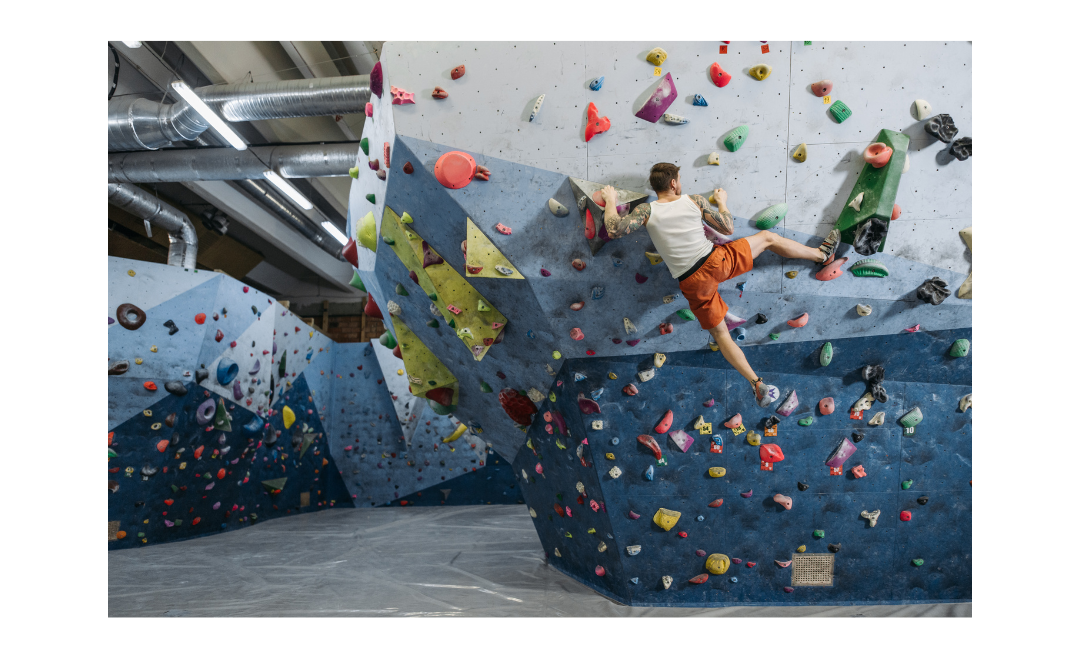Rock Climbing: Scaling new heights of fitness and fulfilment
Rock climbing is an adventurous activity that challenges both body and mind. It requires physical strength, mental focus, and strategic thinking to navigate the intricate routes of indoor climbing gyms and natural rock faces. With its unique combination of physical intensity and mental engagement, rock climbing offers a comprehensive workout that promotes overall well-being.
The Physical Benefits of Rock Climbing
- Full-Body Workout: Climbing engages nearly every major muscle group, including the arms, shoulders, back, core, and legs. Each movement builds strength and endurance.
- Improved Flexibility and Balance: Maneuvering through climbing routes demands flexibility and body control. Regular climbing improves balance, agility, and joint mobility.
- Boosted Cardiovascular Health: Continuous movement and sustained effort elevate heart rate, improving cardiovascular endurance and stamina.
- Increased Grip Strength: Holding onto grips and edges strengthens forearm and hand muscles, enhancing grip strength, which carries over to other physical activities and daily tasks.
The Mental and Emotional Benefits of Rock Climbing
- Enhanced Problem-Solving Skills: Each climbing route is a puzzle that requires focus, planning, and adaptability. Climbers learn to assess and respond to challenges in real time.
- Reduced Stress and Anxiety: Climbing demands complete mental presence, helping participants disconnect from daily stressors and focus on the moment.
- Boosted Confidence and Self-Esteem: Overcoming difficult climbs fosters a deep sense of achievement, reinforcing personal capability and perseverance.
- Connection with Nature: Outdoor climbing offers immersive experiences in natural settings, enhancing mood, mental clarity, and environmental appreciation.
Getting Started with Rock Climbing
- Take an Intro Class: Most gyms offer beginner courses to learn basic techniques, safety protocols, and equipment use.
- Invest in Proper Gear: Start with climbing shoes, a harness, and a chalk bag. Helmets and belay devices are essential for outdoor and rope climbing.
- Climb with a Partner: Climbing is inherently social. Partnering up improves safety, provides motivation, and fosters camaraderie.
- Practice Regularly: Like any skill, improvement comes with consistency. Regular practice builds muscle memory and confidence.
Types of Rock Climbing
- Bouldering: Climbing short routes (called “problems”) without ropes but with crash pads. It focuses on power and technique.
- Sport Climbing: Involves climbing routes with pre-placed anchors and a rope for protection. Great for improving endurance and technical skill.
- Traditional (Trad) Climbing: Climbers place their own protective gear while ascending. It requires advanced skills and careful planning.
- Indoor Climbing: Accessible year-round, indoor climbing gyms offer structured routes and a controlled environment for all skill levels.
Conclusion
Rock climbing is more than a sport—it’s a lifestyle that cultivates strength, resilience, and a sense of adventure. With physical, mental, and emotional benefits, it offers a rewarding path to personal growth and well-being. Whether you’re seeking a new fitness challenge or a mindful way to connect with nature, climbing invites you to rise—literally and figuratively—to your highest potential.
FREQUENTLY ASKED QUESTIONS
Q: Is rock climbing safe for beginners? Yes, when done with proper guidance, equipment, and safety protocols. Indoor gyms are particularly beginner-friendly.
Q: Do I need to be strong to start rock climbing? No, climbing develops strength over time. Many beginners rely more on technique and balance than brute strength.
Q: How often should I go climbing? 2–3 times per week is ideal for building skills and conditioning without overtraining.
Q: What should I wear to climb? Wear flexible, breathable clothing that allows a full range of motion. Climbing-specific shoes are essential for foot grip and precision.
Q: Can kids or older adults rock climb? Absolutely. Climbing can be adapted for all ages and fitness levels, with many gyms offering youth programs and age-inclusive classes.
Contact our friendly Osteo team at MOSIC. We can help you prevent or recover from your injuries.

